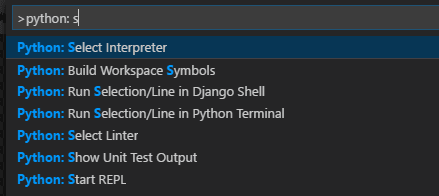Python on a Macintosh running Mac OS X is in principle very similar to Python on any other Unix platform. Use pythonw instead of python to start such. PyVISA is a Python package that enables you to control all kinds of measurement devices independently of the interface (e.g. GPIB, RS232, USB, Ethernet). As an example, reading self-identification from a Keithley Multimeter with GPIB number 12 is as easy as three lines of Python code.
- Python Control System
- Python For Control Engineering
- Python Library To Control Mac Computer
- Python Library To Control Mac App
- Sys Library Python
- Python Library To Control Macro
What is Python pyautogui?
PyAutoGUI is a cross-platform GUI automation Python module for human beings. It is used to programmatically control the mouse and keyboard as a human might. Because of this, the Python pyautogui library proves very useful when it comes to automating tasks on your computer.
Python Control System
Installation
The dll/library load code is in the loadLibrary function in the LabJackPython.py file but the Python call to detect the OS, os.name, is used throughout the file. You can try to fake the os.name call by removing the the 'import os' import in LabJackPython.py and adding a class and global object after the imports like this. PyVISA is a Python package that enables you to control all kinds of measurement devices independently of the interface (e.g. GPIB, RS232, USB, Ethernet). As an example, reading self-identification from a Keithley Multimeter with GPIB number 12 is as easy as three lines of Python code. How to install Jupyter on a Mac (Optional). The Python imaging library (pillow), how to apply optical character recognition to images to recognize text.
Pyautogui has a few dependencies that need to be downloaded before we can use it. Windows Users will already have these dependencies pre-installed, so they are not required to install anything besides the pyautogui library itself.
Run the following commands in your command prompts for your respective Operating System.
Windows
Mac
Linux
Screen Based Functions
size() Function:
This function gives you the size of the screen by returning the maximum x and y co-ordinates available.

Output:
position() Function:
This function gives you the co-ordinates of the mouse cursor on the screen. Returns X and Y co-ordinates.
Output:
onScreen Function()
The onScreen Function tell us whether a specific position exists on screen. Returns true if the position exists, otherwise False.
Output:
Python For Control Engineering
Mouse Functions
Python Library To Control Mac Computer
You can move the cursor using the moveTo() function which takes the x and y coordinates as input.
You should understand how the co-ordinate system for the display screen works in Python. The value of x_coordinate increases from left to right on the screen, and the value of y_coordinate increases from top to bottom. Basically, the value of both the x_coordinate and y_coordinate at the top left corner of the screen is 0.
The time_in_seconds is an important parameter to consider. This parameter decides how long the cursor will take to “move to” the location specified. Sometimes, while trying to automate a program or something, you want to be able to see your automated cursor move. If the value is really low, your cursor will be zipping around all over the place. Keeping it at a value like 1-2 will allow you to see it as it moves.
Python Library To Control Mac App
Moves the cursor relative to current position of pointer on screen.
Normally if you pass an x or y value, the cursor moves you to that location. Like passing 100 and 100 will move the cursor to coordinates (100, 100) of the screen. With the moveRel() function however, movement is relative. So passing 100 and 100 as x and y values will move the cursor 100 pixels to the right and 100 pixels downwards.

Sys Library Python
Click Functions
The following functions deal with automating mouse clicks in a variety of ways. The names of the Functions are pretty self-explanatory.
Python Library To Control Macro
Don’t confuse these two functions for Mouse clicks. The mouseDown() function will keep the mouse “clicked down” until the mouseUp() function is called. May come useful in automating selections (where you click down and drag your mouse across the screen).
Scroll
This will store a PIL object containing the image in a variable.
Keyboard
pyautogui also performs many keyboard like commands. Once again, these are very self-explanatory. The Hotkey function first presses shift and then enter, exactly as a regular human might.
# For the @ symbol pag.hotkey(‘ctrl’, ‘c’)
Prompt Functions
Below are a list of common prompt functions. Each of them brings up a unique prompt with a different GUI. The alert prompt brings up a window with an exclamation mark for instance.


This marks the end of the Python pyautogui Article. Any suggestions or contributions for CodersLegacy are more than welcome. Questions can be asked in the comment section below.
Link to the Python Libraries Section: link